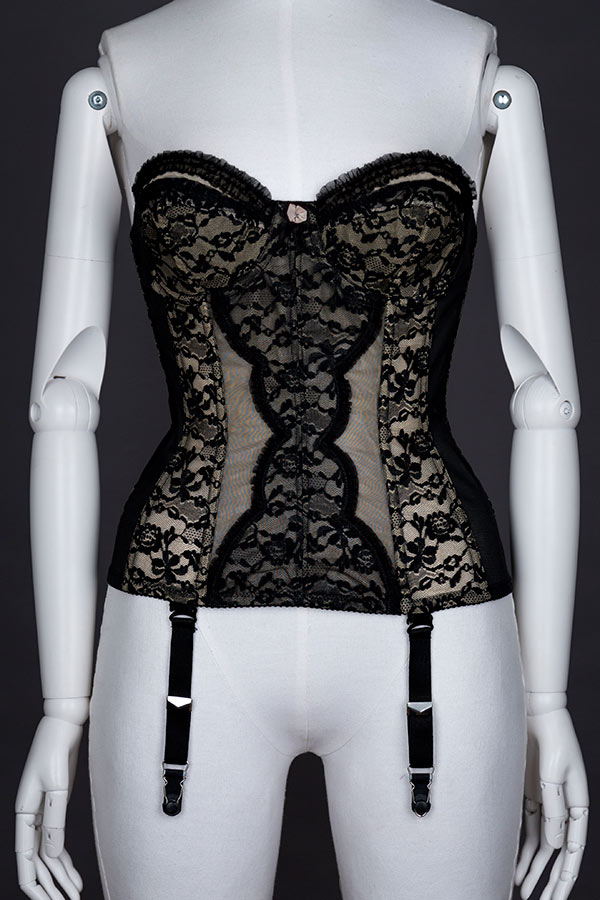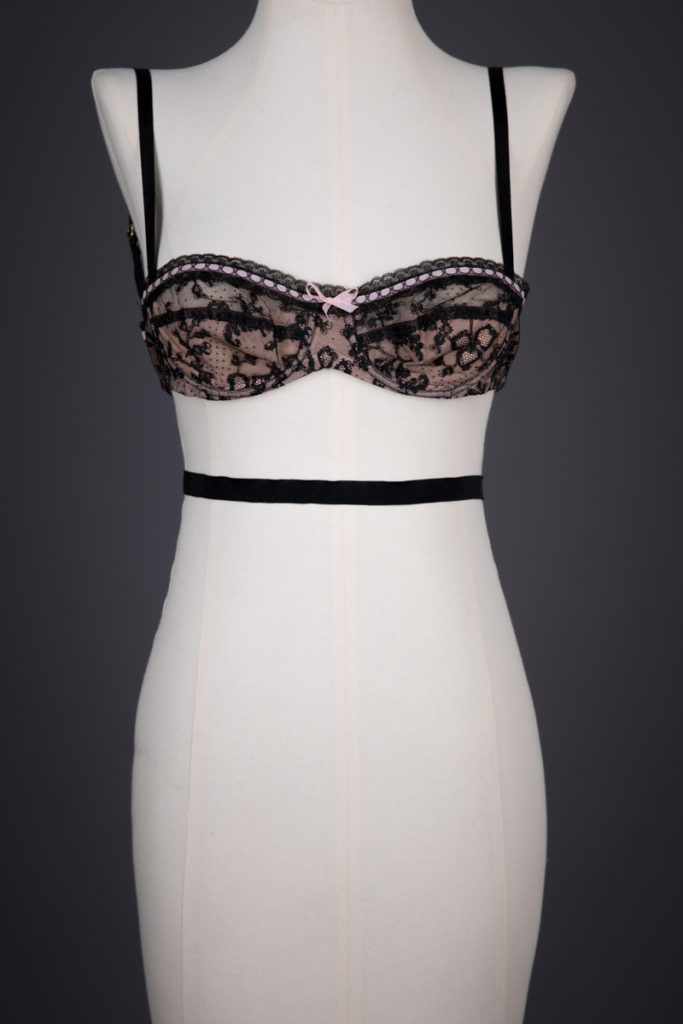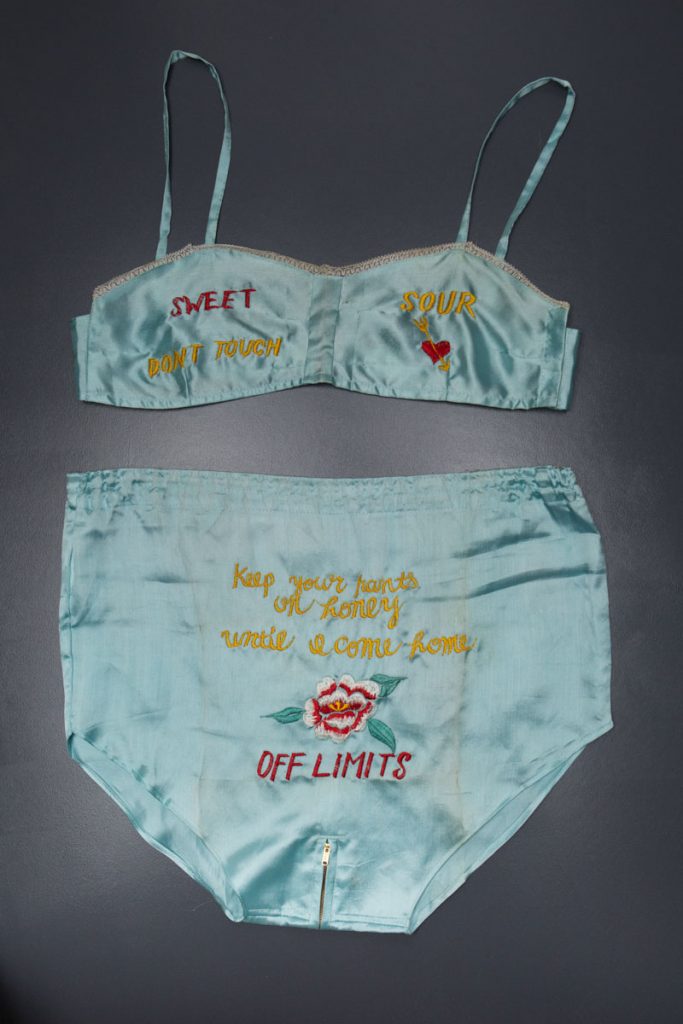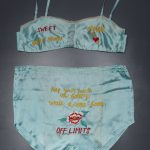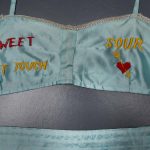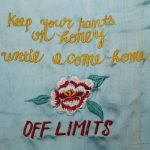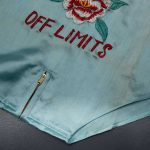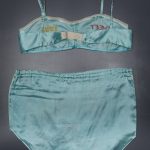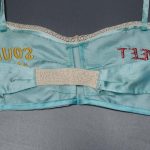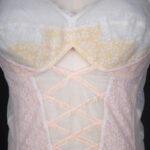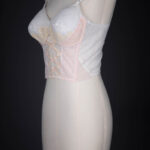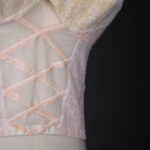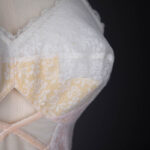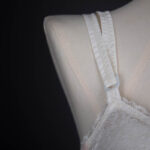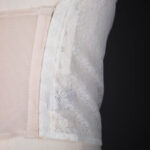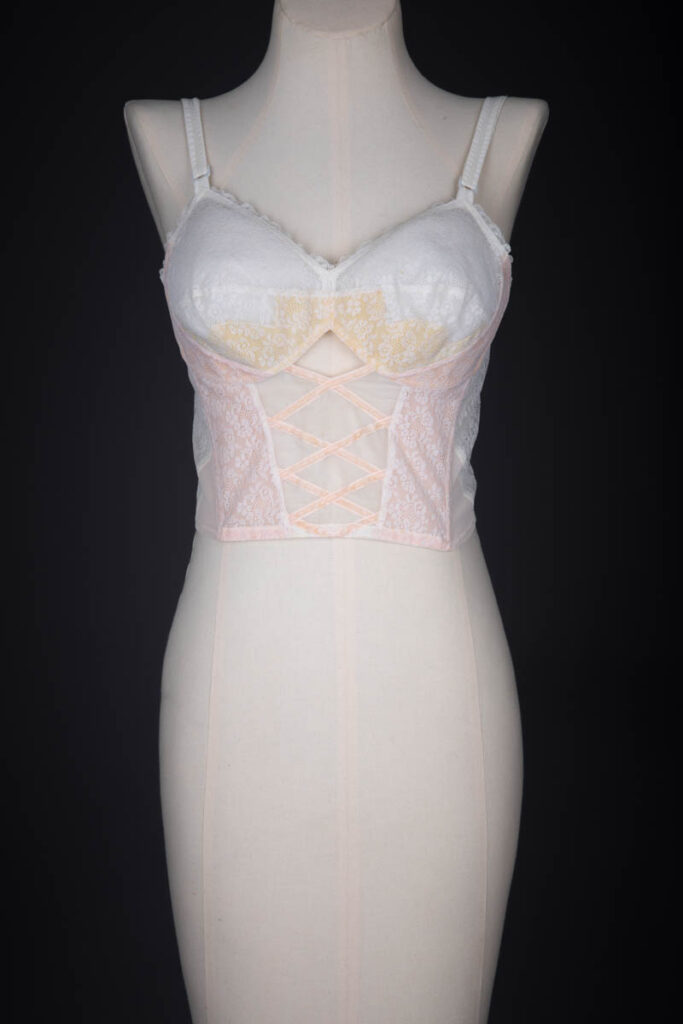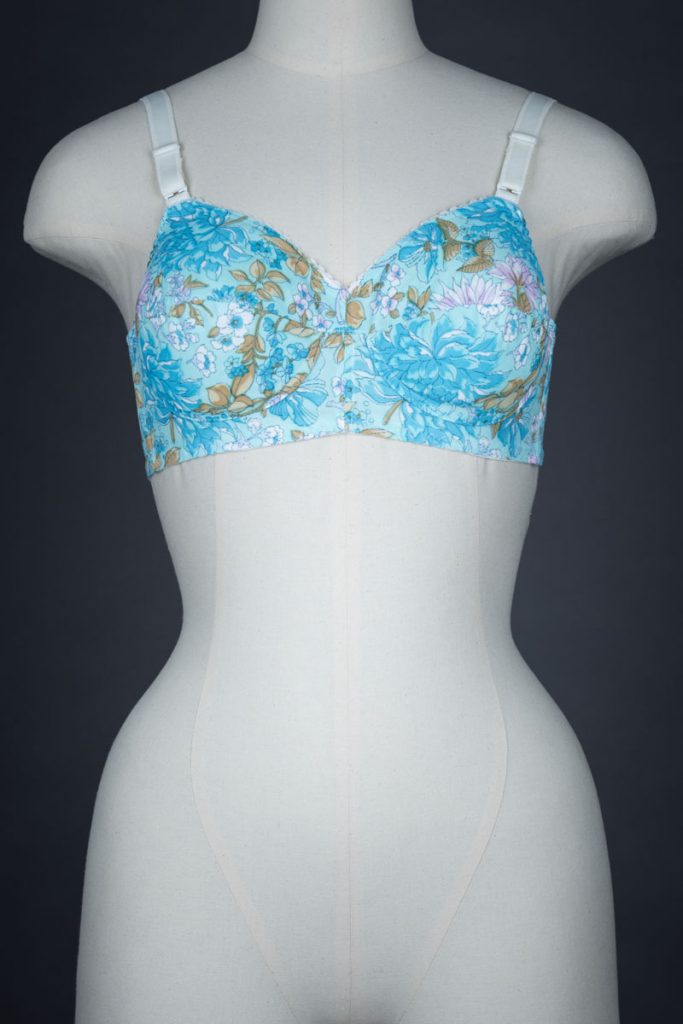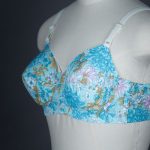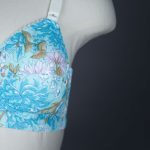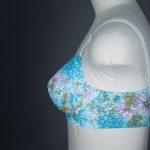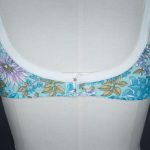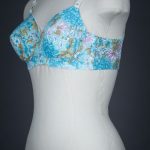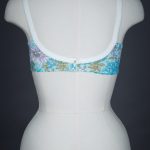The post-war lingerie industry followed the fashion industry as a whole in embracing femininity and a return to a heavily-shaped female body. French couturier Christian Dior is credited with inventing this new fashion trend with his 1947 collection ‘Corolle’, dubbed by Harper’s Bazaar editor Carmel Snow as ‘The New Look’. Sometimes overshadowed by the common use of the term ‘The New Look’, the fact that Dior’s collection was named after a part of a flower (the corolla, which is the central component that holds the petals) shows the importance of florals in this post-war renewal.
Chapter Four: Garlands And Girdles
Corselet With Lace Appliqué, Padded Cups & Tulle Ruffles By Lady Marlene
Date: c. 1950s
Origin: USA
Fabric: Nylon Lace, nylon tulle and nylon mix stretch mesh.
Brand: Likely Lady Marlene
A wonderfully elaborate and flirty rendition of the popular ‘Merry Widow’ style of the 1950s, similar in style to the contemporary ‘basque’. Featuring padded 3-piece foam cups, layers of sheer tulle, nylon lace and stretch mesh. This piece is boned throughout with spiral steel boning, encased in taffetta internal channels.
The cups are underwired, with underwire channels in the same taffetta with additional internal padding at stress points such as the centre front. The 4 suspender straps are elasticated, with metal adjusters and detachable hooks. This garment has a low back and closes with hooks and eyes. As is typical of the era, these hooks and eyes are stitched to the interior of the garment, rather than treated as a tape to encase the raw edges of the fabric as contemporary garments tend to. The top and bottom edges of the garment are finished with a wide, plush elastic that has been applied with a zigzag stitch.
The embellishment on this garment is particularly noteworthy. Lace is used as an overlay on side panels and cups, and has been hand-cut into scallops and appliquéd onto the centre front of the garment. These scallops have then been edged with tiny tulle ruffles. These ruffles have also been applied in 3 tiers to the top pattern piece of both cups. The garment is finished with a small tulle ribbonwork rose at the centre front, on top of a single satin bow.
Ribbon Slot Lace Low Back Bra By Cadolle
Date: c. 1950s
Origin: France
Fabric: Lace & Nylon
Brand: Cadolle
An underwired solution bra that was custom made for its original owner. The bustline has a balconette cut. Elastic strapping forms the bra wings and anchors the bra at the waist to compensate for the lack of back support. It fastens with hooks and eyes at the centre back. Satin shoulder straps are adjustable with celluloid. The cups are made from luxurious leavers lace with nylon and cotton tulle lining. Lace ribbon slot trim embellishing the neckline, with a bow at the centre front.
On the interior of the garment, the underwires are encased in plush velvet ribbon. The cup interiors feature what was originally padding (now largely disintegrated), encased in a nylon pocket.
The Cadolle design house was founded by Herminie Cadolle in 1878, originally a shop that specialised in made-to-measure undergarments. Herminie is often credited with designing the first modern bra in 1889, although this is often contested. The brand continues to this day, and is now headed by Poupie Cadolle, the fifth generation of the family to run the eponymous brand.
In order to create the hourglass silhouette that became standard after 1947, undergarments that would create a fashionable body shape were essential. This could be seen especially in the United States, where a reignited post-war economy, and an embrace of consumerism, meant that advertising which featured the products needed to achieve the feminine ideal was ubiquitous. The flower themes that could be seen in haute couture were copied on a smaller scale in the world of undergarments, chiefly through the use of floral laces and accents. Unlike the focus in the 1920s and 1930s on the delicately embellished ribbon flowers and embroideries of slips and teddies, the floral laces of bras and girdles were often serving a tightly controlled female body.
Embroidered Rayon WWII Souvenir Lingerie Set
Date: c. 1940s
Origin: East or Southeast Asia
Fabric: Rayon satin
As in previous eras, floral designs in lingerie could indicate either chastity or eroticism, depending on the context. Although mainstream lingerie marketed towards female consumers with floral motifs was not necessarily chaste, they were generally respectable and the flower elements gave more of a feminine than an erotic gloss. In contrast, souvenir lingerie sets purchased during World War II, which soldiers would sometimes purchase to send to a girlfriend or wife at home, embraced the flower’s more suggestive meanings. The example on the left is cheeky, but contains a message of ownership over the woman’s body at home, literally saying, “Off Limits.” The central image of the briefs is a rose, which, in its positioning and context, is a tongue-in-cheek way of alluding to the body parts underneath.
Ivory & Pink Lace And Velvet Trim Longline Bra By Christian Dior
Date: 1957
Origin: Designed in Paris, made in England by R. & W.H. Symington
Fabric: Nylon & machine lace
Brand: Christian Dior
In 1957, the Dior brand launched their own lingerie line, capitalizing on the need for complex underpinnings that they themselves had participated in launching. In keeping with their feminine aesthetic, the example above is made of a white floral lace, overlaid on a pink background to show off its detail.
Floral Printed Powernet Bra By St. Michael
Date: c. 1970s
Origin: United Kingdom
Fabric: Nylon Powernet
Brand: St. Michael
This bra, part of a co-ordinating St Michael set from the early 1970s, features non-stretch nylon cups with stretch powernet wings that have been printed to match the fabric on the cups. A slight colour difference has developed with age but, when new, it would have been tricky for anyone without an expert eye to distinguish between these fabrics.
In the late 1960s and early 1970s, flowers in fashion gained a new meaning as they were embraced by counterculture, with the term “flower child,” interchangeable with the term “hippie,” and the “flower power” movement that opposed war in Vietnam. A new embrace of environmentalism also brought a wild element to the use of flowers in fashion, the opposite of the cultured blooms of the nineteenth century.
